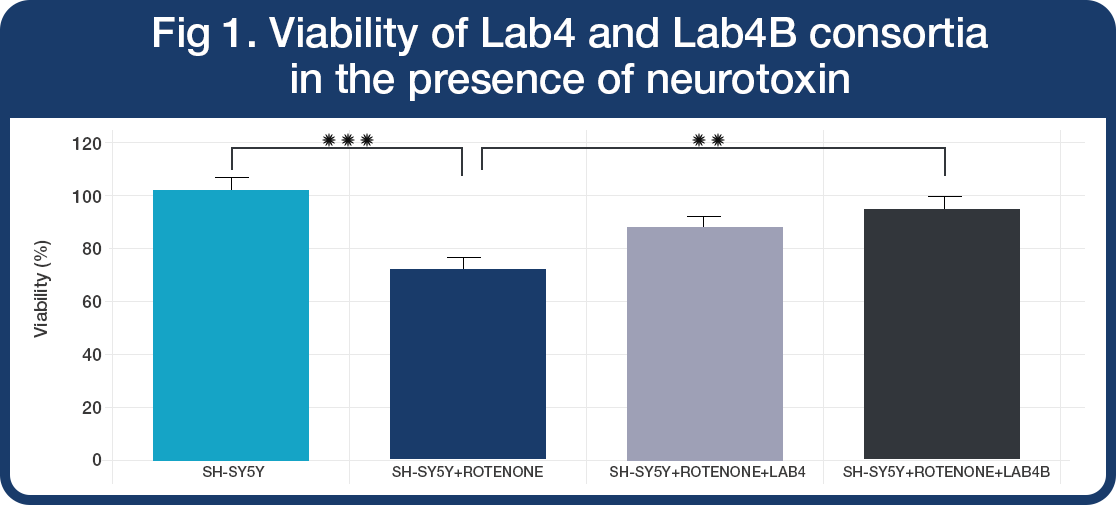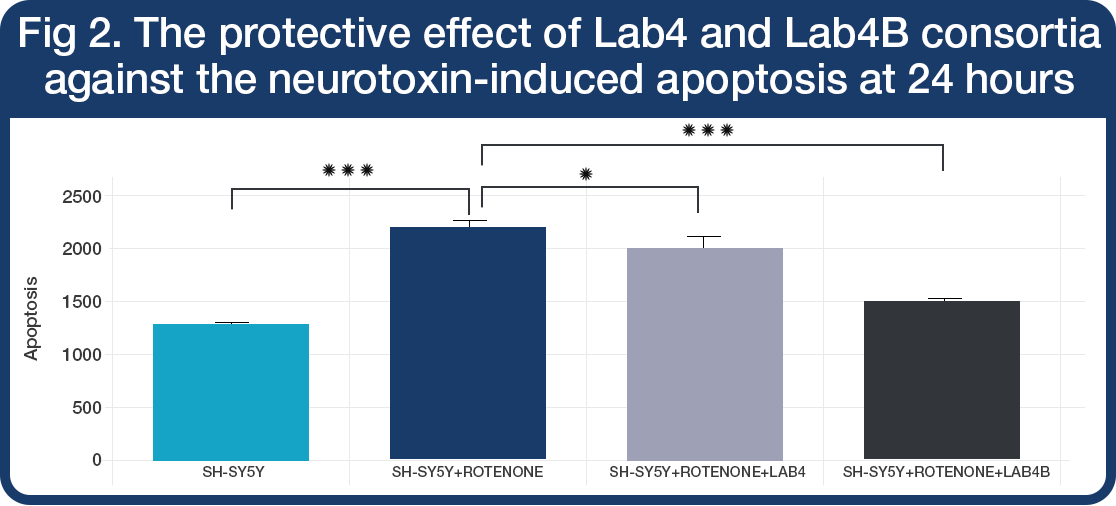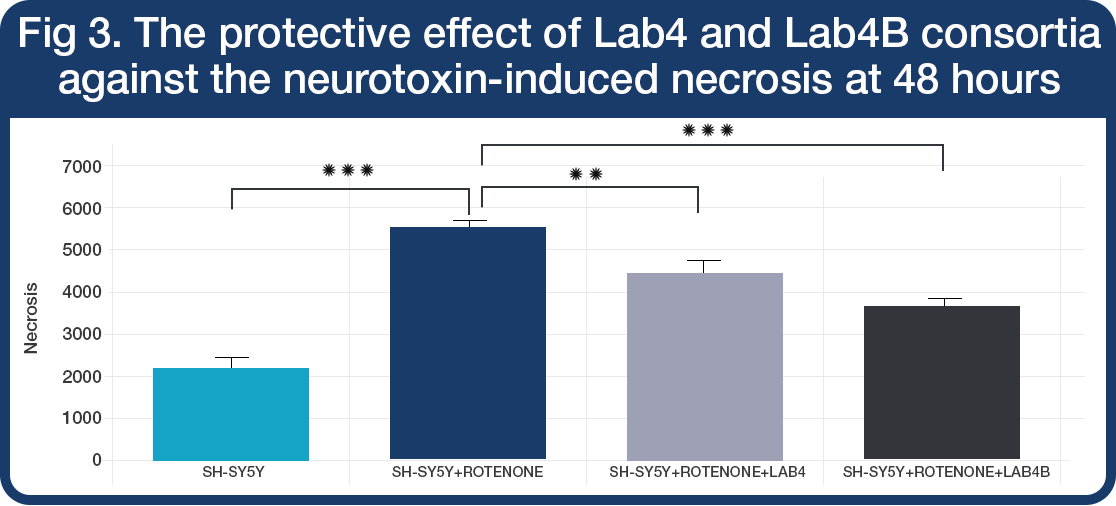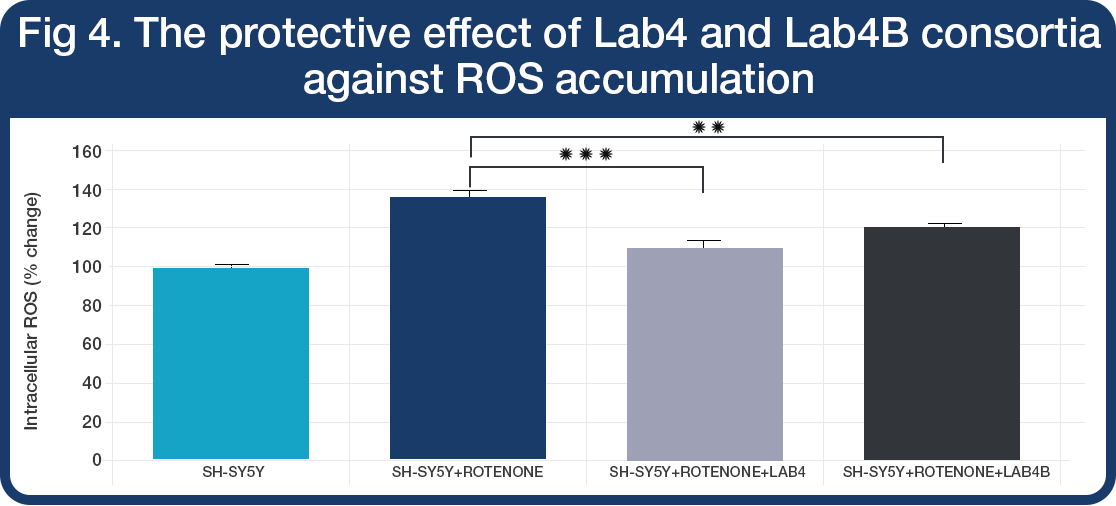Lab4 consortia and neuroprotection
In vitro neuroprotective activities of two distinct probiotic consortia
SUMMARY
This study compares the neuroprotective capability of Lab4 and Lab4B using an established neuronal cell model.
The Lab4 and Lab4B probiotics were found to possess antioxidant activity that supported their ability to protect neuronal cells against neurotoxic challenge in an in vitro model.
Aim
To determine the neuroprotective potential of Lab4 and Lab4B probiotic consortia using an in vitro model of neurotoxicity.
Method
The effect of Lab4 and Lab4B probiotics on neurodegeneration was assessed in an in vitro SH-SY5Y neuronal cell model.

Results
Neuroprotective effect

- When the neuronal SH-SY5Y cells were challenged with the neurotoxin (rotenone), Lab4 and Lab4B probiotics prevented the loss of cells viability (Fig 1.). The survival rate of SH-SY5Y cells in presence of rotenone was 75.9% (***P<0.001) compared to the untreated SH-SY5Y cells (100%). The survival rate increased in the presence of Lab4 (91.9%, P=0.062) and Lab4B (96.9%,**P=0.007).
- Lab4 and Lab4B showed the protective effects against development of rotenone-induced apoptosis at 24 h (Fig 2.) and necrosis at 48 h (Fig 3.) with Lab4B showing more activity. The apoptosis of the neuronal SH-SY5Y cells increased significantly in the presence of neurotoxin at 24 h (1.74-fold, ***P<0.001). However, the presence of Lab4 and Lab4B significantly reduced apoptotic activity (1.54-fold, *P=0.040 for Lab4, 1.18-fold, ***P<0.001 for Lab4B). Significantly higher levels of necrosis were detected after neurotoxin exposure at 48 h (2.52-fold, ***P<0.001). In the presence of Lab4 and Lab4B necrosis rates were significantly reduced (1.97-fold, **P=0.006 for Lab4, 1.60-fold, ***P<0.001 for Lab4B).


Antioxidant activity

- Both Lab4 and Lab4B possessed antioxidant activity and reduced ROS accumulation in SH-SY5Y cells (***P<0.001 for Lab4 and **P=0.002 for Lab4B, Fig 4.).
- Lab4 induces the expression of gene encoding the antioxidant enzyme glutathione reductase (*P=0.022) and Lab4B the expression of manganese-dependant superoxide dismutase (***P<0.001), suggesting the specific antioxidant mechanisms of action for these probiotic consortia.
Conclusion
Lab4 and Lab4B probiotic consortia demonstrated potential neuroprotective effects.

